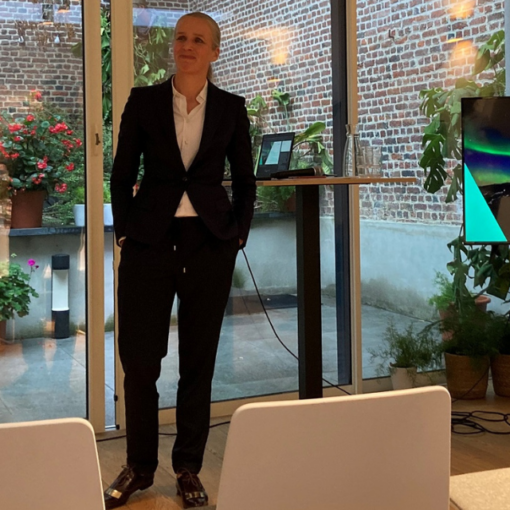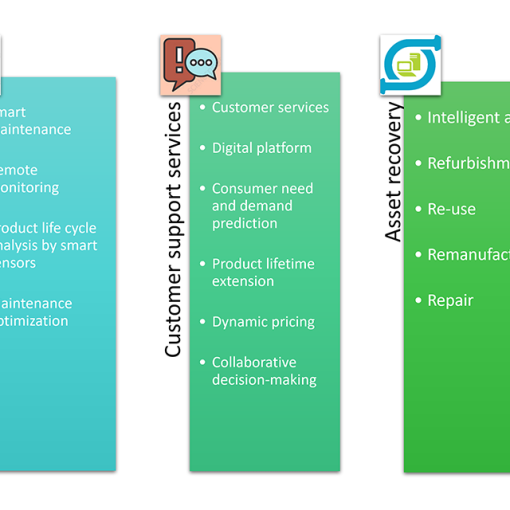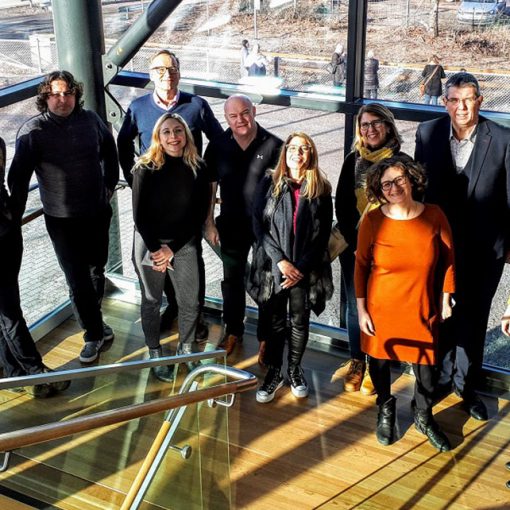Following the principles of the circular economy (CE) provides a wider range of new business opportunities and leads to deeper customer relations. The CE business models put these principles in practice and good examples can be found from the report Putting theory into Practice: Circular Economy Business Models in the EU [pdf]. A closer look at the promotion of new business models in the Russian market conditions is taken in the Material circulation in Russian construction sector thesis (Kravtcova 2021).
There are five typical CE business models identified: starting from renewability, sharing platforms, a product as a service, product-life`s extension, and, more common to managing construction demolition waste (CDW) streams, resource efficiency and recycling. Shifting from the current business models to the CE business models is challenging for companies, but it is crucial to take an advantage of the new opportunities and lower the environmental impact. At the same time, value chains, corporate culture and economic systems require fundamental rethinking. (European Commission 2017.)
Reasons to apply the CE business models
Looking at the trends, it is expected that companies, which apply the CE principles, would take over markets from companies unable to renew themselves. The first reason is the regulations aimed at reducing the over consumption of natural resources and preventing climate change. The shortage of natural resources in future would drive companies to exploit raw materials and side streams as efficiently as possible. (Sitra 2019.) Secondly, fiscal politics is moving towards stimulating the resource-efficient approach and penalizing waste disposal to landfills. Thirdly, the promotion of eco-innovative behaviour is changing the consumer priorities, hence the investments in the CE business models are also increasing. Moreover, digitalization plays a huge role in the change due to the fast sharing of information and other services. Technological advancements such as artificial intelligence (AI), the Internet of Things (IoT) and robotics, enable the implementation of circular value chains and business models more efficiently. (Sitra 2019.)
Measuring the results
One of the most common methods of measuring the environmental effects of solutions and services is carbon footprint calculation, which demonstrates how much the actions reduce carbon emissions (Dri 2018). The company would see the activity motivated if there is a possibility to gain profit, cost savings and/or a good reputation.

Cooperation is a driving factor
The key factor to develop the CE is the cooperation between different stakeholders. The wider the network of companies is getting, the more opportunities appear e.g. to share resources, consider innovative business models, increase the transparency and the effectiveness of promotion the CE. It is vital to communicate with customers and disseminate the information clearly – the life-cycle costs and the environmental impacts of the product or service should influence the decision. In practice, there are additional costs during the design and construction of resource-efficient buildings, but the costs are usually compensated by lower operating, maintenance or disposal costs. Changing the customer`s attitude is also a challenge, but the tendencies are moving the business towards the CE implementation.
Authors
Kravtcova Daria is a graduating student at LAB University of Applied Sciences participating in the Double Degree Program in Civil and Construction Engineering.
Anne-Marie Tuomala is a lecturer at LAB University of Applied Sciences, who specializes in the Building, Society and Environment.
Links
Link 1. Interreg Europe. 2019. Putting theory into Practice: Circular Economy Business Models in the EU. A Policy Brief from the Policy Learning Platform. European Union. [Cited 7 April 2021]. Available at: https://www.interregeurope.eu/fileadmin/user_upload/plp_uploads/policy_briefs/PB_on_CEBM_FINAL.pdf
Link 2. Kravtcova, D. 2021. Material circulation in Russian construction sector. Bachelor’s thesis. LAB University of Applied Sciences, Double Degree Program in Civil and Construction Engineering. [Cited 7 April 2021]. Available at: http://urn.fi/URN:NBN:fi:amk-202104124611
References
Dri M., Canfora P., Antonopoulos, I. S., Gaudillat, P. 2018. Best Environmental Management Practice for the Waste Management Sector. EMAS BEMP. [Cited 7 April 2021]. Available at: https://ec.europa.eu/jrc
European Commission. 2017. Moving towards a circular economy with EMAS. Best practices to implement circular economy strategies (with case study examples). Luxembourg: Publications Office of the European Union. [Cited 7 April 2021]. Available at: https://ec.europa.eu/environment/emas/pdf/other/report_EMAS_Circular_Economy.pdf Kravtcova, D. 2021. Material circulation in Russian construction sector. Bachelor’s thesis. LAB University of Applied Sciences, Double Degree Program in Civil and Construction Engineering. [Cited 7 April 2021]. Available at: http://urn.fi/URN:NBN:fi:amk-202104124611
Sitra. 2019. New business models play a key role in enterprises’ strategies. [Cited 7 April 2021]. Available at: https://www.sitra.fi/en/articles/new-business-models-play-key-role-enterprises-strategies/
Pictures
Image 1. Mazumder A. 2020. Person Holding Green and White Flower. Pexels. [Cited 8 April 2021]. Available at: https://www.pexels.com/photo/person-holding-green-and-white-flower-5550904/




